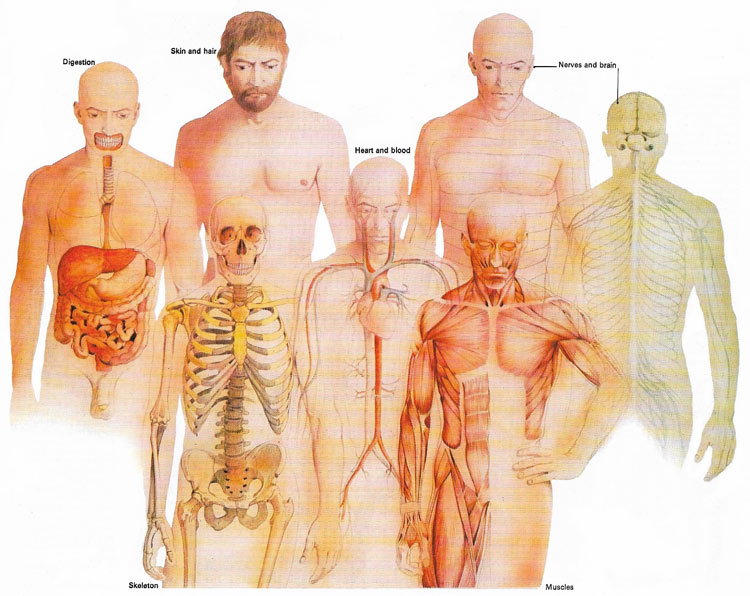organ

A number of the body's organ systems are illustrated here. The skeletal system is made up of more than 200 bones joined by fibrous ligaments. At the joints cartilaginous plates on the bone ends glide over each other to allow movement. The muscles are the body's motors, making possible its concerted internal and external responses to the environment. The digestive system is concerned with the intake of food, its digestion, and then the absorption of its energy-giving and body-building substances. The circulatory system's principal organ, the heart, pumps blood to every part of the body through arteries, arterioles, and, finally, capillaries. These are connected to the venules and veins that return blood to the heart. The skin protects the underlying tissues, regulates body temperature, and helps excrete wastes. The nervous system includes the brain, spinal cord, and nerve network, and receives and responds to all internal and external stimuli needing either conscious or unconscious responses. The body's healthy and proper functioning depends on the close and efficient interaction of the more than 50,000 million cells that contribute to the interaction of the major systems of the body.
An organ is a collection of tissues that performs a particular function or set of functions in an animal or plant's body. The heart, brain, and skin are three organs found in most animals. The leaf, stem, and root are three organs found in most plants. Organs are composed of tissues, and may be organized into larger organ systems.
An accessory organ is an organ that assists with the functioning of some other organ within a system. Accessory organs include the teeth, tongue, salivary glands, gallbladder, liver, and pancreas. Organs, such as the vermiform appendix in humans, are termed vestigial organs.
Organ system
An organ system is a collection of organs that have related roles in an organism's functioning. Eleven major organ systems are present within humans and animals, although some animals lack one or more of them. They are:


